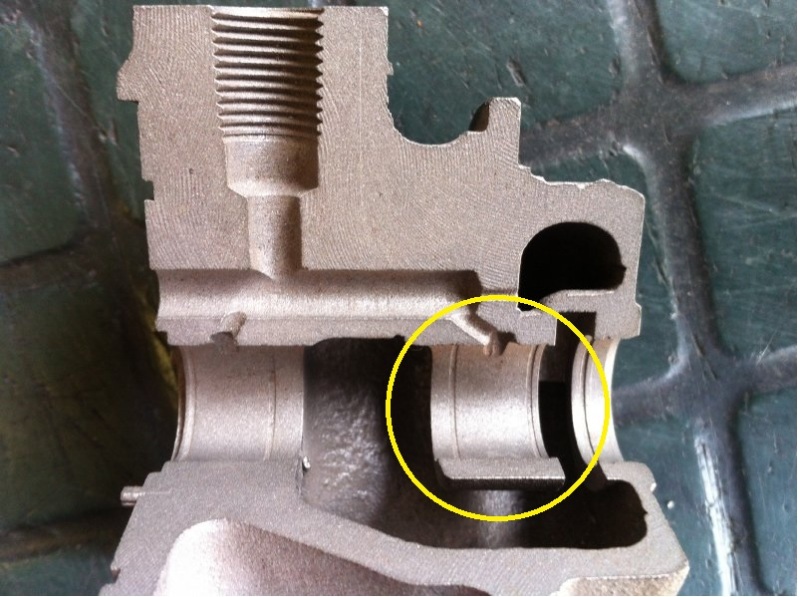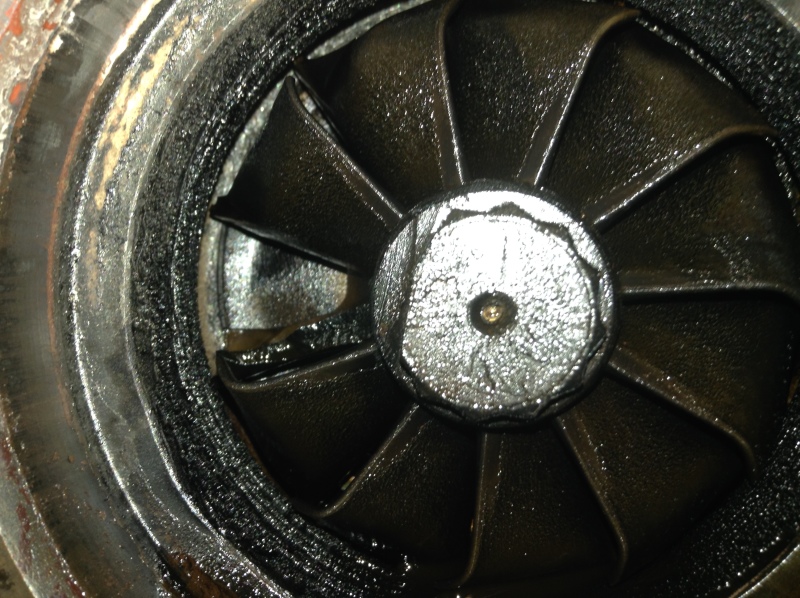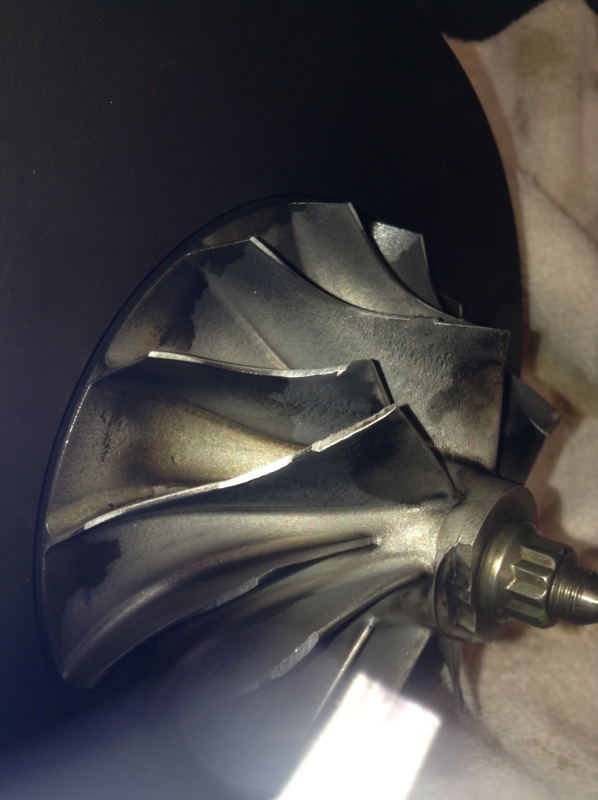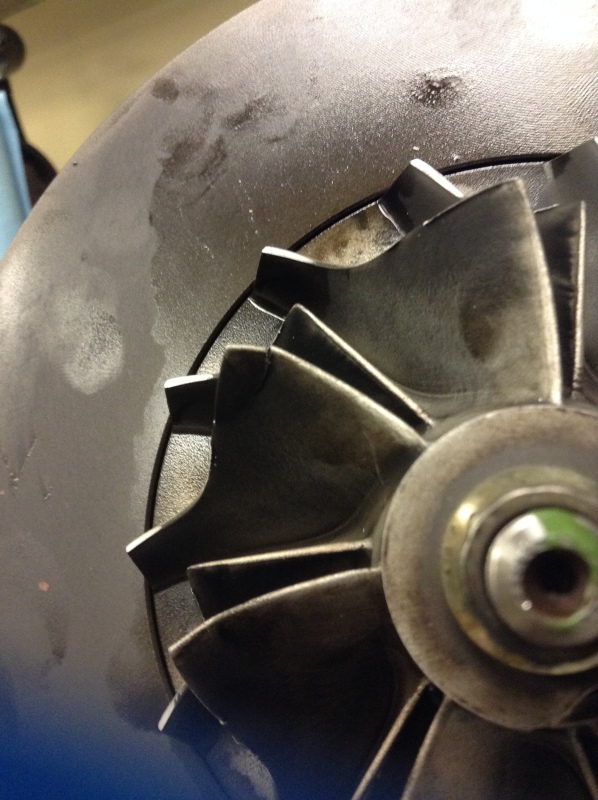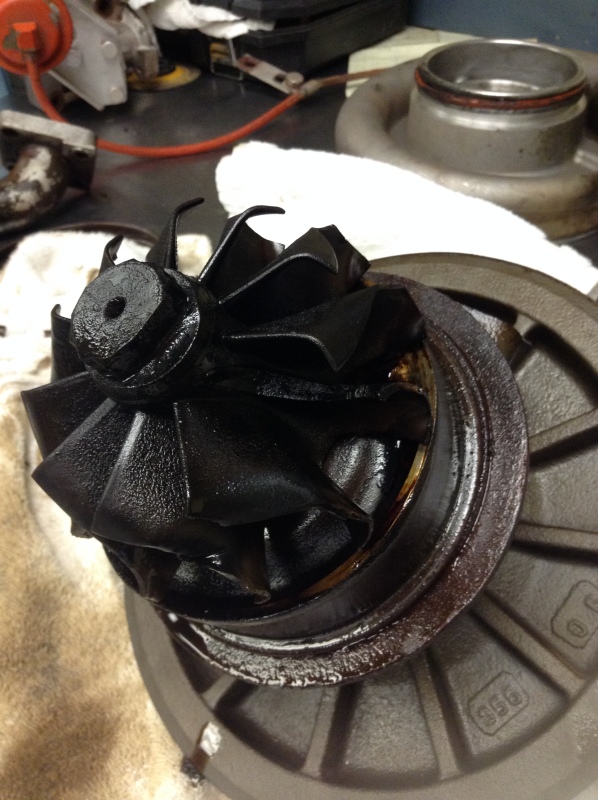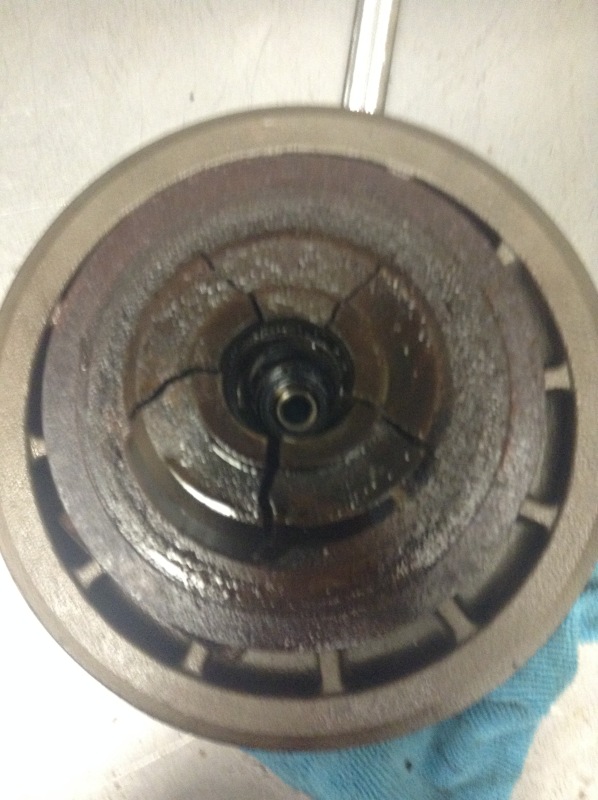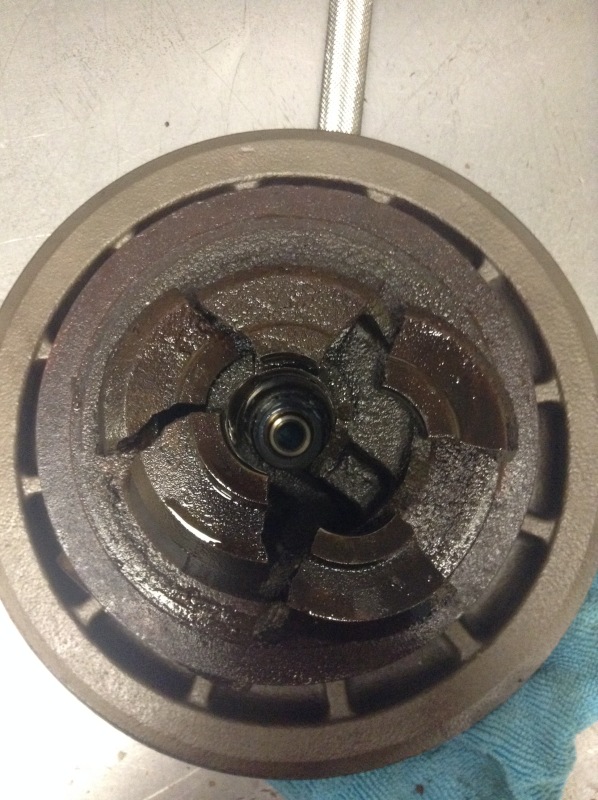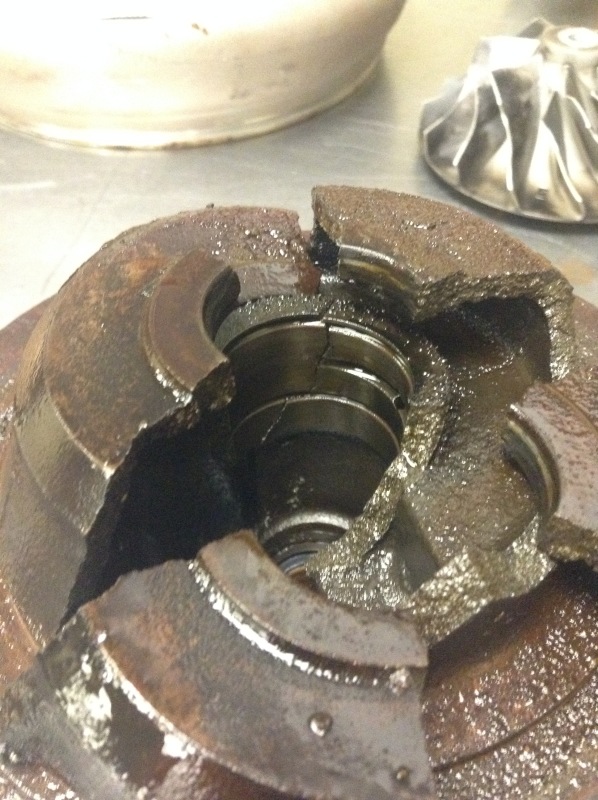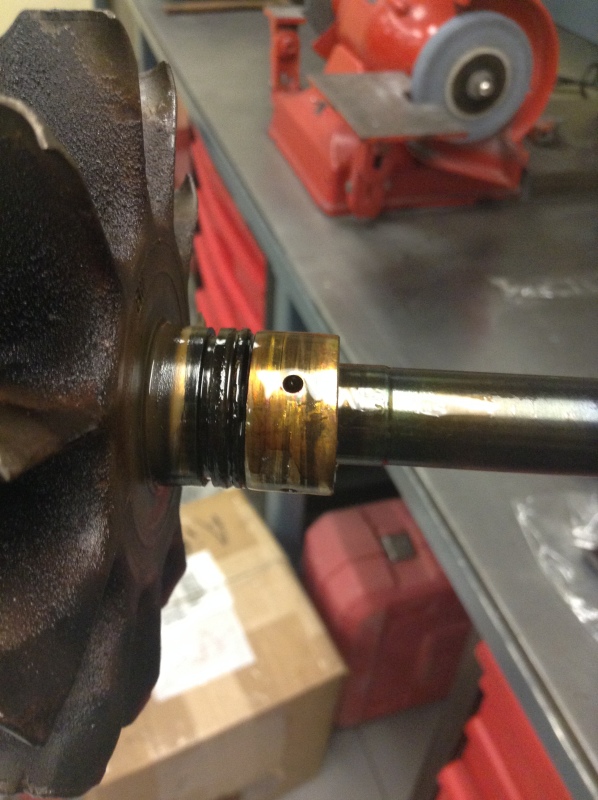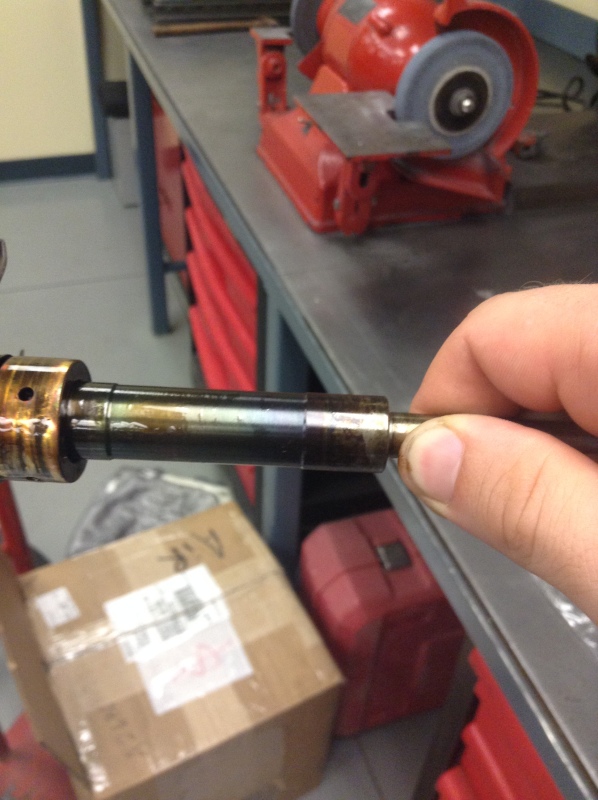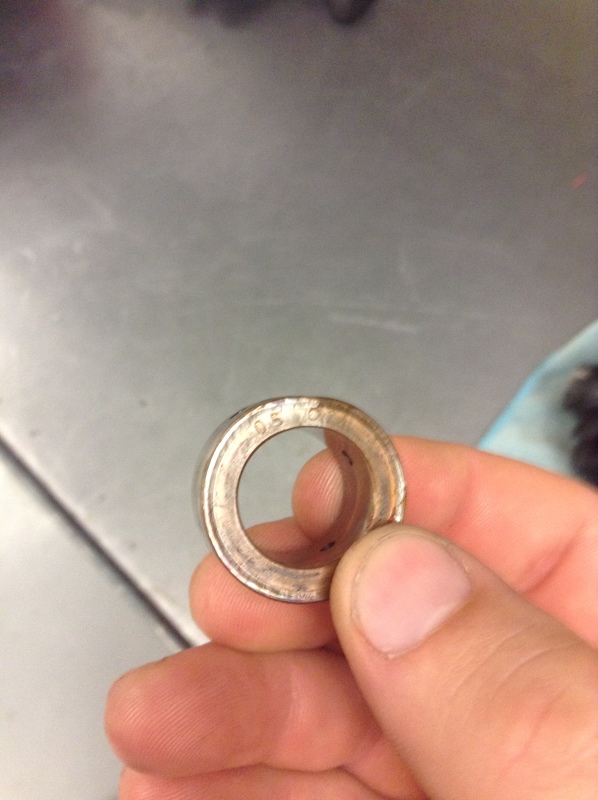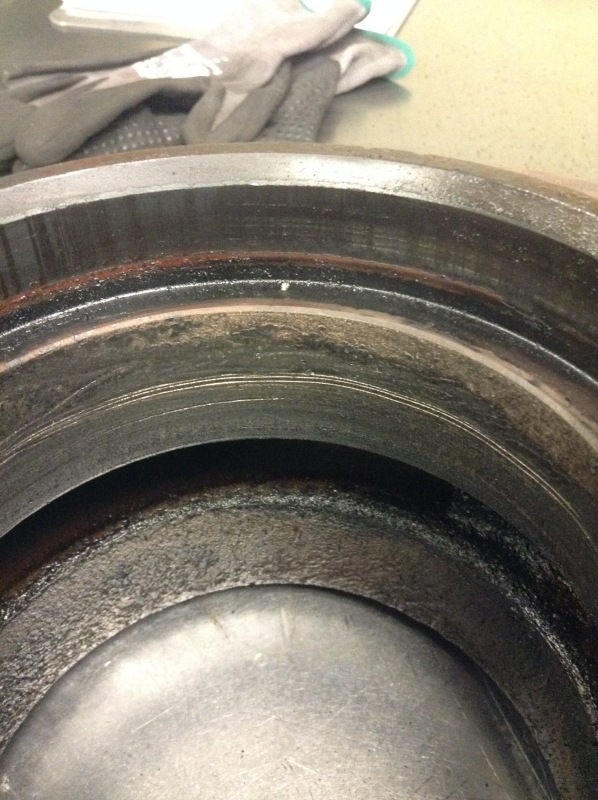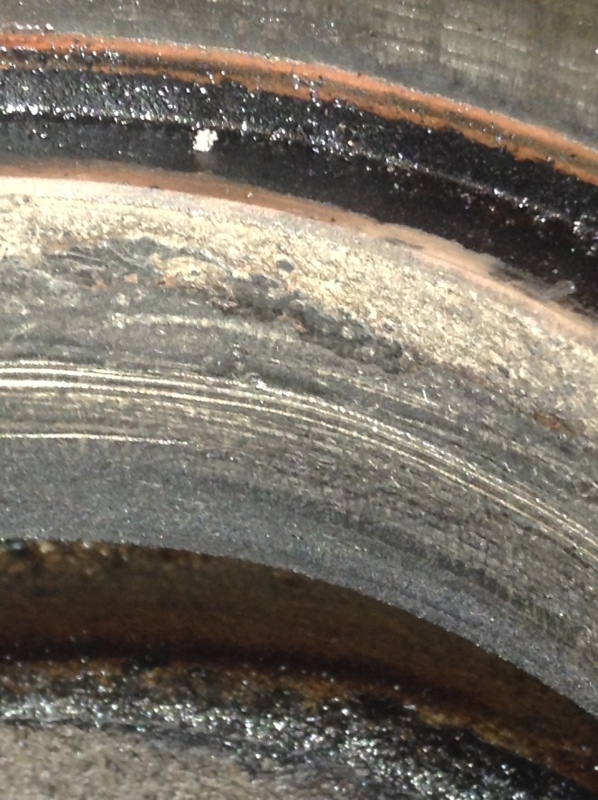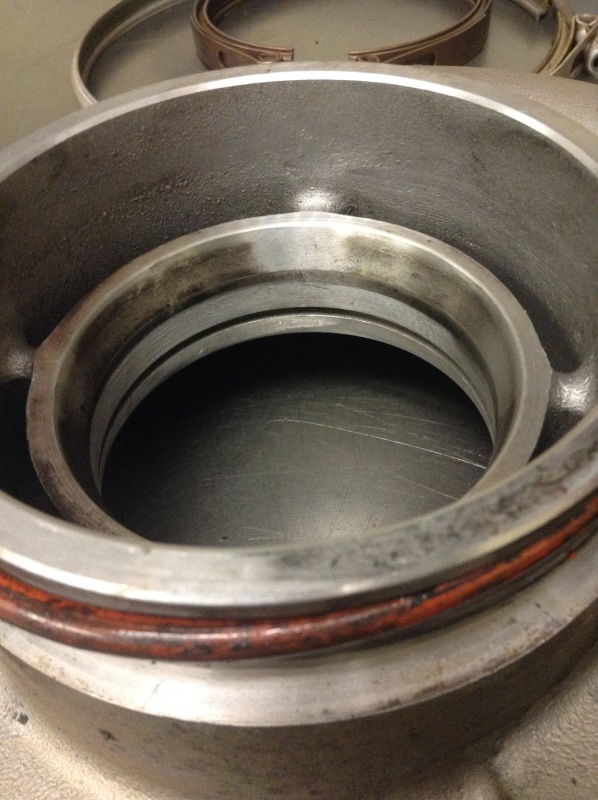A couple of references you may find helpful, first
This a good general overview of turbo failures. Also if you can find a copy of the Caterpillar publication SEBV0550 "Turbochargers Applied Failure Analysis" you'll find some failuer modes pretty close to what you see on your unit.
I think you already have your answer, cold starts and hot shut downs on a generator set starting and stopping everyday without a prelube/postlube cycle. Unfortunately have seen a lot of this type failure in heavy duty engines, why in many cases prelube pumps are added.
From your pictures it seems like you suffered a hot end bearing failure, when a turbo shuts down hot, with the shaft still spinning and no oil flowing the oil cokes around the hot side seal and bearing, forming abrasive particles. At restart, especially on a genset, engine zips right up to rated speed, shaft is spinning and can be running "dry" for several seconds until the oil galleries fill up and gets oil all the way up to the turbo bearing housing. Gives all those nice hard little particles of carbon you generated from the hot shutdown a chance to grind away at the bearing and seal areas. As this process repeats the bearing clearance at the hot end increases, starts to cause contact between the turbine wheel and turbine housing, putting further strain on the hot end bearing and seal area, accelerating the wear. When the wear on the hot end becomes bad enough, the cold end bearing starts to stress and begins to wear on the outer edges since the shaft isn't being held straight anymore. As the wear progresses, the compressor wheel can also start to make contact with the compressor housing, as these contacts start to occur, now the turbo shaft gets slammed back and forth, impacting the thrust bearing. As the hot and cold wheels continue to make contact, they get out of balance, putting even more stress on the already worn and damaged bearings and seals. Unless you pickup a performance problem, the likely end result is a failure like yours. The final phases of the failure accelerates rapidly.
There may be other contributing factors, and without actually doing a root cause failure analysis is hard to tell exactly what happened. But as you provided more info it seems like you pretty much have found your root cause.
Hope that helps, MikeL
